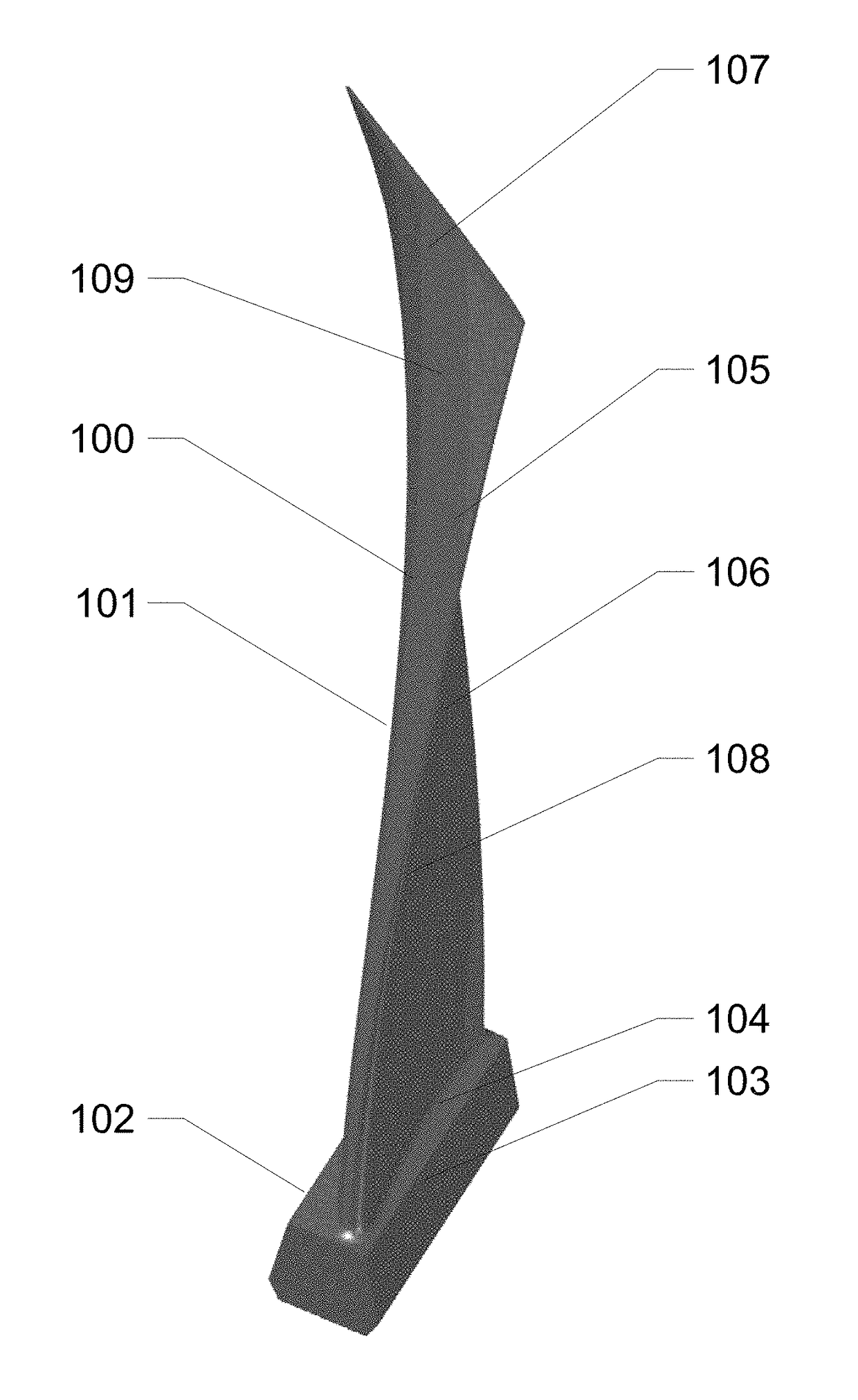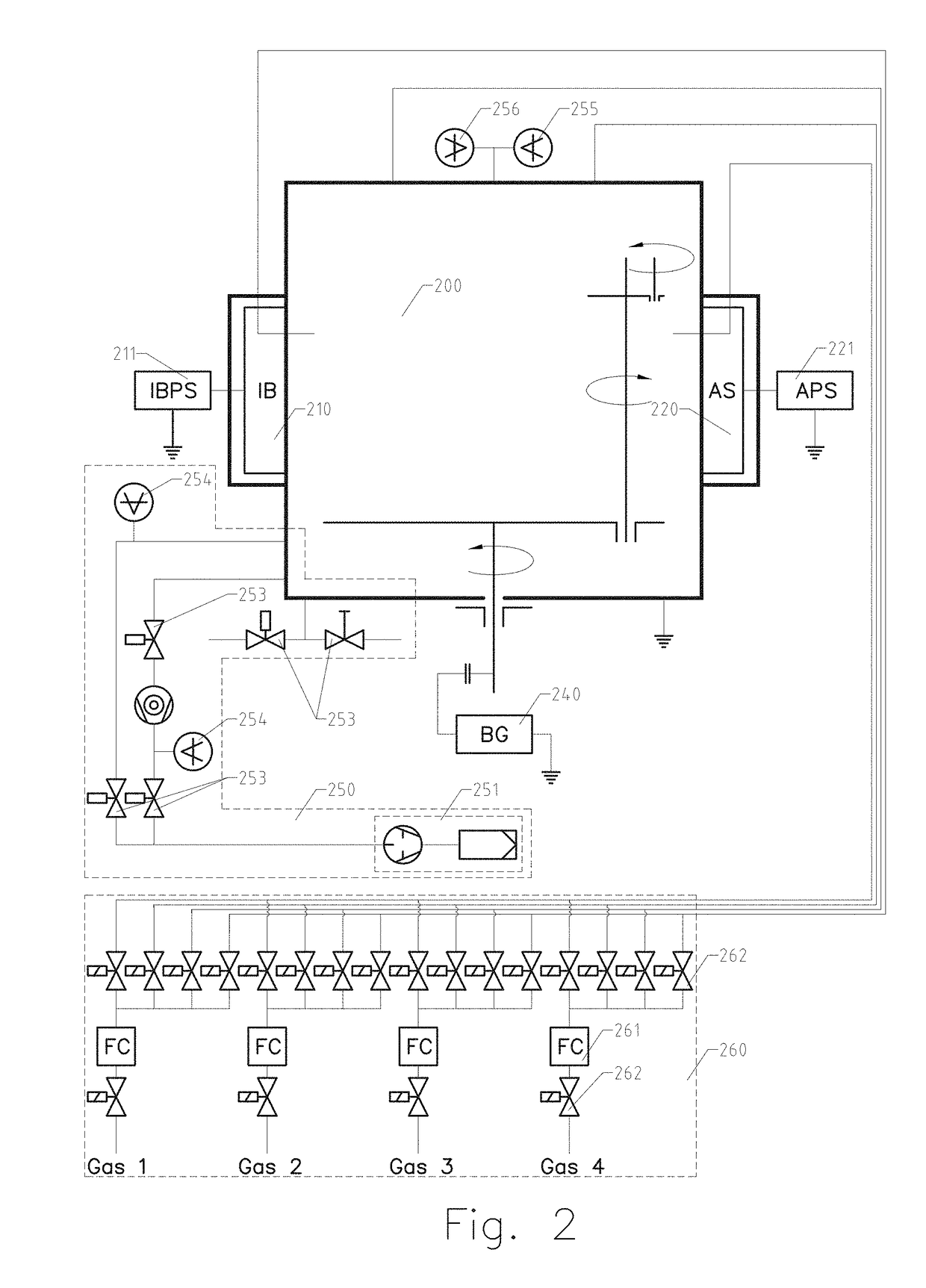Conditioning method of gas turbine engine components for aerodynamic noise reduction
- Summary
- Abstract
- Description
- Claims
- Application Information
AI Technical Summary
Benefits of technology
Problems solved by technology
Method used
Image
Examples
Embodiment Construction
[0047]The present invention employs a conditioning method of gas turbine engine components (e.g. compressor blades and vanes) for reducing aerodynamic noise.
[0048]FIG. 1 shows a blade 100 of a gas turbine engine compressor. The blade is one of the components of the conditioning procedure. Each blade employs a base 101 and an airfoil 102. The base 101 comprises a dovetail root 103 and a platform 104. The airfoil 102 contains a leading edge 105, a trailing edge 106 and a profile tip 107. The airfoil 102 has two sides: concave-pressure side 108 and convex-suction side 109. High velocity air flow across the curved blade and vane profile, particularly on the suction side 109, forms a laminar boundary layer near the leading edge 105, downstream but prior to the trailing edge 106 it develops into a turbulent boundary layer. The nature of changes in the boundary layers through-out the profile, influence proper usage of energy in the compressor.
[0049]The compressor blades are manufactured by...
PUM
| Property | Measurement | Unit |
|---|---|---|
| Length | aaaaa | aaaaa |
| Thickness | aaaaa | aaaaa |
| Surface smoothness | aaaaa | aaaaa |
Abstract
Description
Claims
Application Information
 Login to View More
Login to View More - Generate Ideas
- Intellectual Property
- Life Sciences
- Materials
- Tech Scout
- Unparalleled Data Quality
- Higher Quality Content
- 60% Fewer Hallucinations
Browse by: Latest US Patents, China's latest patents, Technical Efficacy Thesaurus, Application Domain, Technology Topic, Popular Technical Reports.
© 2025 PatSnap. All rights reserved.Legal|Privacy policy|Modern Slavery Act Transparency Statement|Sitemap|About US| Contact US: help@patsnap.com



